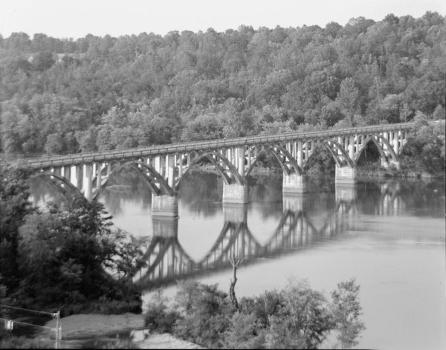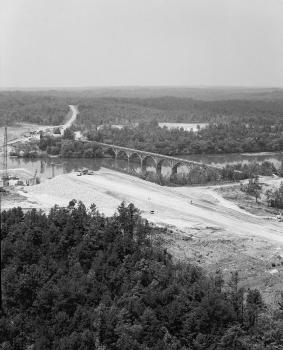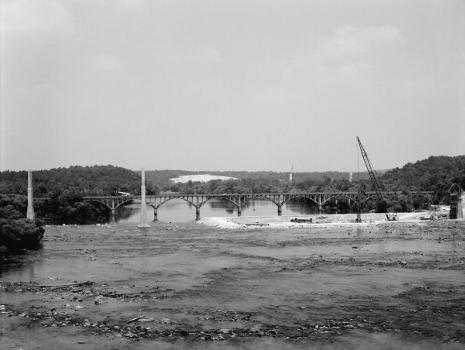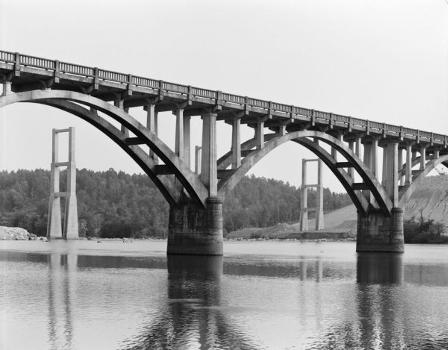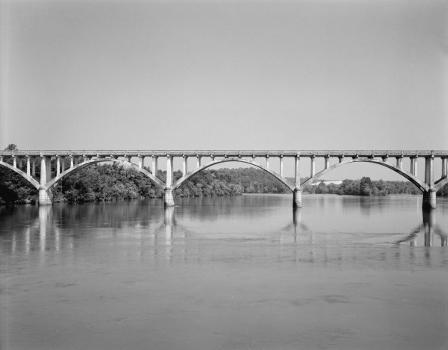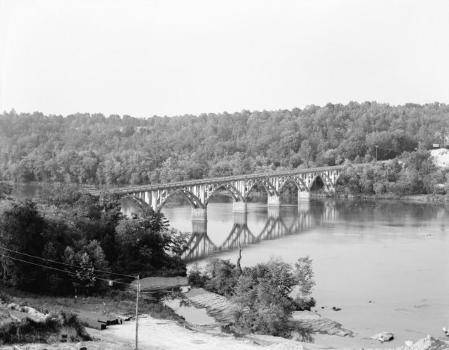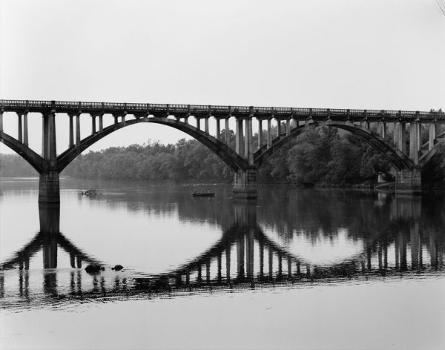General Information
Project Type
| Structure: |
Deck arch bridge |
|---|---|
| Function / usage: |
Road bridge |
| Material: |
Reinforced concrete bridge Structurae Plus/Pro - Subscribe Now! |
Location
| Location: |
Elbert County, Georgia, USA Abbeville County, South Carolina, USA |
|---|---|
| Crosses: |
|
| Next to: |
New Georgia-Carolina Memorial Bridge
|
| Coordinates: | 34° 4' 7" N 82° 38' 28.94" W |
Technical Information
Dimensions
| number of spans | 11 |
Materials
| arches |
reinforced concrete
|
|---|
Excerpt from Wikipedia
The Georgia–Carolina Memorial Bridge was a highway crossing over the Savannah River between the states of Georgia and South Carolina that was in service from 1927 to 1981. The completion of this bridge marked the beginning of the end for Savannah River ferry traffic.
History
In November 1921, the Calhoun Highway Association requested the Georgia State Highway Department to conduct surveys of the Savannah River near Calhoun Falls, South Carolina, to determine a site for a bridge. In March 1925, R. E. Toms, District 8 Engineer of Georgia, approved the Burton's Ferry site just above the homestead of James Edward Calhoun, a son of John C. Calhoun, at Millwood, South Carolina, estimated to cost at around $200,000 (equivalent to $2.32 million in 2018).
The federal government committed $100,000 (equivalent to $1.16 million in 2018) with the states of Georgia and South Carolina each committing the same amount. Elbert County, Georgia and Abbeville County, South Carolina, each would contribute $25,000 (equivalent to $290 thousand in 2018) to their state's obligation.
In April 1925, Abbeville County voted for a $25,000 bridge bond, and in August, Elbert County matched the sum. In June 1925, Elbert County Commissioners were assured by the State Highway Board that the Calhoun Highway would be funded from Johnsontown, Georgia, to the bridge site on the Savannah River at Burton's Ferry. In August 1925, Searcy B. Slack offered two plans for the crossing, a steel deck truss bridge and a reinforced concrete arch bridge.
In February 1926, Emmett M. Williams of Monroe, Georgia, secured the lowest bid for the concrete arch bridge at $213,992 (equivalent to $2.47 million in 2018). An unnamed bridge company from Greensboro, North Carolina, was the low bidder for the steel deck truss bridge. Despite the higher cost, Abbeville County insisted on the concrete arch design. Ground was broken 23 March 1926 by James Y. Swift of Elberton.
Design and construction
The bridge was an eleven-span concrete arch design, with the symmetrical arches of two ribs and open spandrels. The approach girders were 48 feet (15 m) long and the bridge had a vertical clearance of 50 feet (15 m) above the river surface. The spans were 125 feet (38 m) long and 18 feet (5.5 m) wide. Two memorial tablets, bolted to the banisters, were later removed. At the time of its construction, it was one of the largest reinforced concrete bridges in the southeastern United States.
Dedication
The American Legion posts in both counties suggested that the bridge be a memorial to American soldiers who lost their lives in the Great War, and by September 1927, the span was being referred to as the Georgia–Carolina Memorial Bridge. The crossing was officially opened at a large dedication ceremony on Armistice Day 1927. Miss Ida Calhoun, lineal descendant of John C. Calhoun, broke a bottle of ginger ale over the concrete banister at the center of the bridge.
Replacement
The bridge was replaced by a new crossing in 1981.
Text imported from Wikipedia article "Georgia–Carolina Memorial Bridge" and modified on July 29, 2020 according to the CC-BY-SA 4.0 International license.
Participants
Currently there is no information available about persons or companies having participated in this project.
Relevant Web Sites
- About this
data sheet - Structure-ID
20011003 - Published on:
13/12/2003 - Last updated on:
27/07/2020

